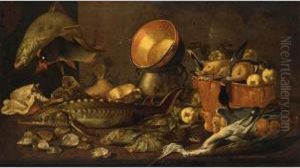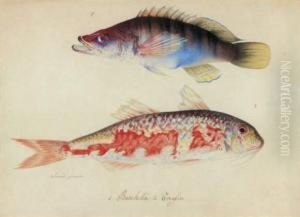Gian Francesco Susini Paintings
Gian Francesco Susini was an Italian sculptor of the High Baroque period, born in 1585 in Florence, Italy. He was a prominent figure in the Florentine art scene and is often associated with the Mannerist style that preceded the Baroque. Susini was a talented bronze caster and is particularly renowned for his skill in this medium. His works are characterized by their exquisite detail, dynamic compositions, and emotional expressiveness.
Trained by his uncle, the eminent sculptor Antonio Susini, Gian Francesco became an accomplished artisan in his own right. Antonio was a favored assistant of the famous Florentine sculptor Giambologna (Jean Boulogne), and through this connection, Gian Francesco was heavily influenced by Giambologna's style and techniques. After his uncle's death, Gian Francesco took over the workshop and continued the tradition of producing high-quality bronze sculptures.
Susini's works often reflected the themes of antiquity, mythology, and the human form, which were popular during the Renaissance and Baroque periods. He was particularly adept at capturing the subtleties of human emotion and the fluidity of movement in his figures. His sculptures ranged from small, intricate statuettes to life-sized figures and were sought after by patrons not only in Italy but also across Europe.
Some of Susini's most notable works include his renditions of Giambologna's models, such as the 'Rape of the Sabines' and 'Hercules Slaying the Centaur'. He also made original works, such as 'St. John the Baptist Preaching in the Wilderness' and 'The Crouching Venus'. His attention to detail and ability to imbue his sculptures with a sense of life and vigour made his works highly prized during his lifetime and they continue to be celebrated today.
Gian Francesco Susini remained active in Florence throughout his life and contributed significantly to the city's artistic heritage. He passed away in 1653, leaving behind a legacy as one of the key figures in the transition from Mannerism to the more emotive and dramatic Baroque style. His sculptures can be found in various museums and collections around the world, serving as enduring examples of the mastery of bronze casting during the Italian Baroque era.

